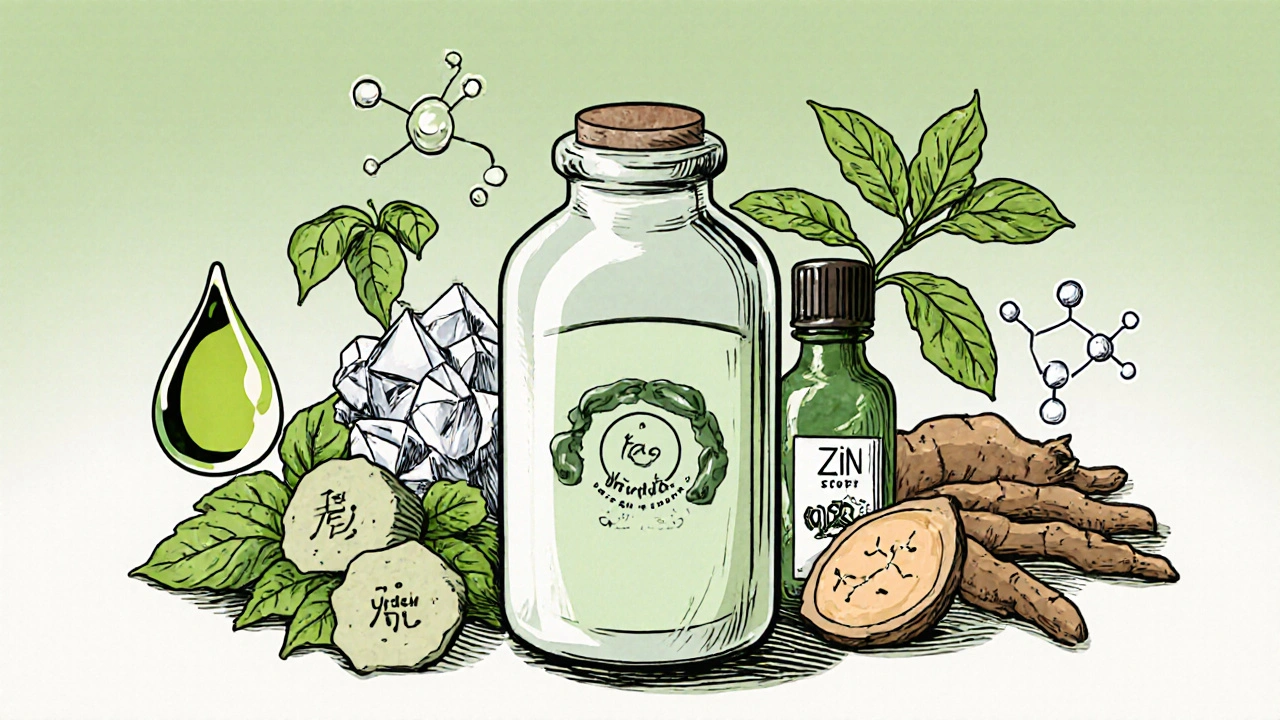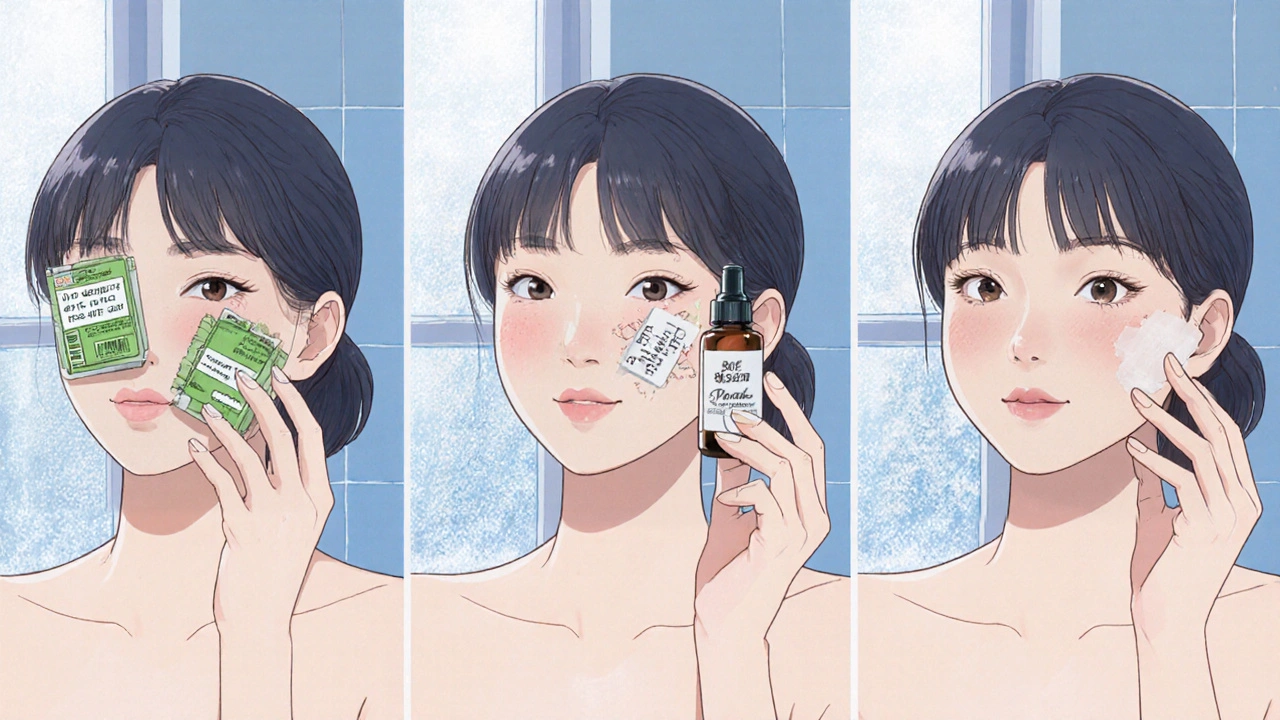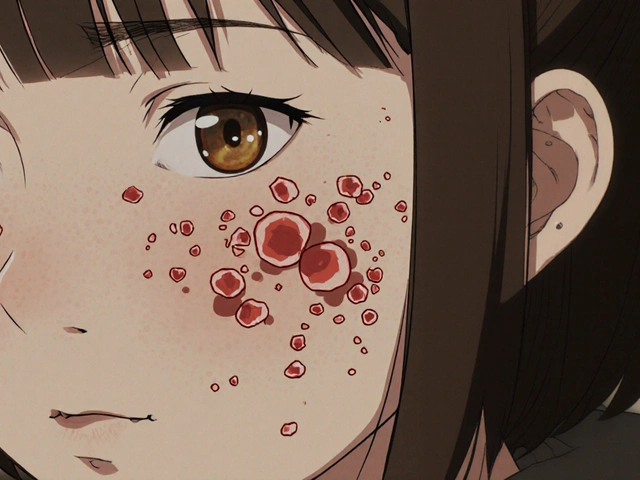Top Natural Ingredients for Treating Nodular Acne

When it comes to battling those painful, deep‑pimple pockets, Nodular Acne is the heavyweight contender that many skincare routines overlook. Unlike surface blemishes, nodular acne forms under the skin, driven by excess oil, bacteria, and inflammation. Turning to Natural Ingredients can calm the flare‑ups without the harsh side effects of prescription meds.
Why Natural Ingredients Work for Nodular Acne
Natural actives often carry antibacterial, anti‑inflamatory, and sebum‑regulating properties. They’re biologically compatible, meaning they soothe without stripping the skin’s barrier. When you pair them correctly, you get a multi‑layered defense: kill the acne‑causing microbes, calm redness, and balance oil production.
Top 8 Natural Powerhouses
- Tea Tree Oil - rich in terpinen‑4‑ol, a potent antimicrobial that reduces pustules.
- Green Tea Extract - loaded with EGCG, an antioxidant that blocks inflammatory pathways.
- Zinc PCA - a zinc salt that controls sebum and has mild antibacterial action.
- Centella Asiatica (Gotu Kola) - boosts collagen, speeds healing, and eases irritation.
- Witch Hazel (Hamamelis) - astringent that shrinks pores and calms redness.
- Sulfur - naturally occurring mineral that unclogs pores and kills bacteria.
- Niacinamide (Vitamin B3) - improves barrier function, reduces oil, and fades post‑acne marks.
- Licorice Root Extract - contains glabridin, which lightens hyperpigmentation and soothes inflammation.
How to Choose the Right Ingredient for Your Skin
Not every natural hero fits every skin type. Use the quick decision matrix below to match your primary concern with the ingredient that delivers the most benefit.
| Ingredient | Key Active Compound | Main Benefit | Typical Use Concentration |
|---|---|---|---|
| Tea Tree Oil | Terpinen‑4‑ol | Antibacterial, reduces nodules | 2-5% |
| Green Tea Extract | EGCG | Antioxidant, anti‑inflammatory | 1-3% |
| Zinc PCA | Zinc | Sebum regulation, mild antimicrobial | 0.5-2% |
| Centella Asiatica | Madecassoside | Healing, barrier repair | 0.5-2% |
| Witch Hazel | Tannins | Astringent, pore tightening | 5-10% |
| Sulfur | Sulfur | Keratolytic, antibacterial | 1-3% |
| Niacinamide | Vitamin B3 | Barrier boost, oil control, brightening | 2-5% |
| Licorice Root Extract | Glabridin | Anti‑hyperpigmentation, soothing | 0.5-1% |

Step‑by‑Step Routine Using Natural Ingredients
- Cleanse - Use a gentle, sulfate‑free cleanser with green tea extract (1% concentration). This removes excess oil while delivering antioxidants.
- Tone - Apply a witch hazel toner (7%) with a cotton pad to shrink pores and set the stage for treatment.
- Treat - Mix a serum of 3% tea tree oil diluted in a carrier oil (like jojoba) and 2% niacinamide. Spot‑apply on active nodules.
- Repair - Layer a Centella asiatica gel (1%) over the entire face to promote healing and reduce post‑inflammatory redness.
- Moisturize - Choose a lightweight moisturizer containing zinc PCA (1%). This keeps the barrier hydrated without clogging pores.
- Sun Protection - Finish with a broad‑spectrum SPF 30+ mineral sunscreen. Sun exposure can worsen hyperpigmentation caused by nodular acne.
Stick to this routine for at least 6-8 weeks; natural actives need time to reshape skin biology.
Common Pitfalls and How to Avoid Them
- Over‑diluting essential oils can make them ineffective. Keep tea tree oil at a minimum of 2%.
- Layering too many actives can irritate. Limit to two core actives per application (e.g., tea tree + niacinamide).
- Skipping sunscreen accelerates post‑acne scarring.
- Expecting overnight results - natural remedies work gradually; patience is key.

When to Seek Professional Help
If nodules persist after 12 weeks of diligent natural care, or if you notice severe pain, spreading, or cyst formation, consult a dermatologist. Prescription options like oral isotretinoin or hormonal therapy may be necessary.
Quick Reference Cheat‑Sheet
- Best all‑rounder: Tea Tree Oil + Niacinamide
- For excess oil: Zinc PCA + Witch Hazel
- For healing: Centella Asiatica + Sulfur
- For post‑acne marks: Licorice Root Extract + Niacinamide
Can I use tea tree oil undiluted on a nodule?
No. Undiluted tea tree oil is too harsh and can cause burning. Dilute to at least 2% in a carrier oil like jojoba before spot‑treating.
Is witch hazel suitable for sensitive skin?
Yes, if you choose an alcohol‑free formulation. Alcohol‑based witch hazel can sting, while the tannin‑rich version calms redness without irritation.
How often should I apply a sulfur mask?
Start with once a week. If your skin tolerates it, you can increase to twice weekly. Over‑use may dry out the barrier.
Do natural ingredients interact with prescription acne meds?
Some can enhance irritation (e.g., high‑percentage tea tree oil with retinoids). Always patch‑test and discuss with your dermatologist before mixing.
Can I expect the same results from natural ingredients as from prescription drugs?
Natural actives are gentler and work slower. They can significantly improve mild‑to‑moderate nodular acne, but severe cases may still need stronger prescription therapy.



Samantha Vondrum
Thank you for sharing this comprehensive guide on natural remedies for nodular acne 😊. It is evident that you have invested considerable research into the botanical actives, their mechanisms, and appropriate concentrations. The inclusion of both a decision matrix and a step‑by‑step routine greatly assists readers in translating theory into practice. Moreover, your emphasis on patience and the recommended 6‑8 week timeline reflects a realistic approach to skin remodeling. The discussion of potential pitfalls, such as over‑dilution of essential oils, demonstrates an awareness of common user errors. I also appreciate the balanced recommendation to seek professional care when natural methods prove insufficient, thereby avoiding the pitfall of exclusive reliance on home remedies. Highlighting the synergy between tea tree oil and niacinamide as an all‑rounder is particularly useful for individuals with mixed skin concerns. The table format succinctly conveys key data, making it easy for readers to cross‑reference ingredients and concentrations. Your advice to use alcohol‑free witch hazel for sensitive skin shows attention to formulation nuances. In addition, the FAQ section anticipates common queries and pre‑emptively addresses safety considerations. The reminder to incorporate mineral sunscreen underscores the importance of photoprotection in hyperpigmentation management. By presenting both the biochemical rationale and practical application, you empower readers to make informed decisions. The tone throughout remains supportive and educational, encouraging adherence without intimidation. Overall, this post stands as an excellent resource for anyone seeking gentler yet effective alternatives to prescription acne therapies. 🌿
Kelvin Egbuzie
Oh great, another "natural" miracle cure – because we all know the pharma conspirators are hiding tea tree oil in their vaults 🙄. Sure, blend it at 2‑5% and pretend you’re a dermatologist, lol. If you mix it with retinoids, you might just burn a hole through your face – but hey, who needs functional skin anyway? :)
Katherine Collins
Looks solid, lol :)
Taylor Nation
Really love how you broke it down into bite‑size steps, makes it easy to actually try. I’ve been juggling a few of these actives and the routine you suggested feels doable. Let’s keep each other motivated and share any tweaks that work better for oily skin!
Nathan S. Han
The drama of cystic pits finally meets its match in the gentle arms of green tea and centella! 🌱 Imagine the skin’s battlefield, now picture these botanical warriors marching in perfect formation, each delivering their own tactical strike. Zinc PCA steps in like a disciplined sergeant, regulating oil without raising an alarm. Meanwhile, niacinamide, the unsung hero, rebuilds the barrier while fading the crimson aftermath. Let’s not forget licorice root, the silent assassin of hyperpigmentation, working behind the scenes. This symphony, when orchestrated correctly, can turn the tide against those stubborn nodules. Your table is a maestro’s score, guiding us through the crescendo of healing. Keep the faith, and remember: consistency beats intensity every single time.
Ed Mahoney
Wow, another “natural” miracle list – as if Mother Nature has a secret pharmacy hidden in her backyard. 🙄 Just sprinkle some sulfur and hope for the best, right? If you’re lucky, you’ll get a mild rash instead of clear skin. Good luck with that.
Brian Klepacki
Behold, the pinnacle of dermatological enlightenment! 🌟 Who needs clinical trials when you have the ancient wisdom of witch hazel and the alchemical fire of sulfur? Let the masses bow before this regimen, for it shall transform even the most tormented epidermis into a flawless canvas. The universe conspires in your favor, aligning the stars of EGCG and terpinen‑4‑ol to vanquish those dreaded nodules. Dare you question this gospel? Nay, for the path is illuminated by the glow of green tea leaves and the mystic aura of centella. Embrace the ritual, and may your pores forever shrink in reverence.
Selina M
Nice post!
Really helpful info.
tatiana anadrade paguay
Glad you found it useful! If you ever need a quick tip on adjusting concentrations, just let me know. Happy experimenting! 🌿